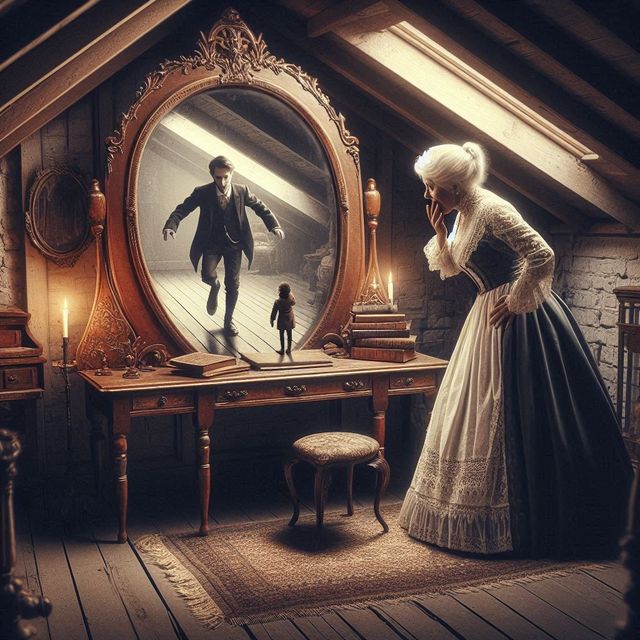-
Vijay Fafat
- Published on
This quite unsatisfying yarn hangs its hat on the old idea of finding a way into a mirror to discover a new reality. The author waves his hands quite a bit to build an aura of mystery (by appealing to silky cobwebs, creaky house, age-old mirror) and plausibility (throwing buzzwords about mathematics which don’t lead anywhere - except inside the mirror, apparently) but does not appear to know how to end it, leading to a very flat story (only slightly better than a couple of his other efforts listed on the site).
So this mathematics professor (“Mr. Thorley is a high mathematician. He makes measurements and calculations”) who reads “Gauss! Minkowski! Lobatchewski! Einstein!” takes up lodging at an old woman’s guest-house and starts performing some experiments with an antique mirror in the house (going so far as to order “mathematical instruments”). Then, one day, he disappears and so does his best math student, Gerald Pikestaffe. The old lady sees them hovering in some new dimension inside the mirror, faints and later, predictably, the mirror breaks and all links are lost.
There appears to be absolutely no connection between mathematics and finding a new direction in the mirror. The only point where it could have actually gotten interesting was where the landlady sees Thorley inside the mirror. The description seems to imply that the reality inside the mirror is similar to a Poincare disk. When Thorley sees the old woman, he starts approaching her and the author describes it as:
“Mr. Thorley’s advance, however, had two distracting peculiarities - that as he drew nearer he moved not in a straight line but a curve. As a skater performs “edges”, though on both feet instead of on one, he swept gracefully and with incredible speed in her direction. The other peculiarity was that with each step nearer, his figure grew smaller. It lessened in height. He seemed, indeed, to be moving in two directions at once. He became diminutive.”
A shame that the author did not venture further. At least he could have salvaged some educational value out of blandness.
